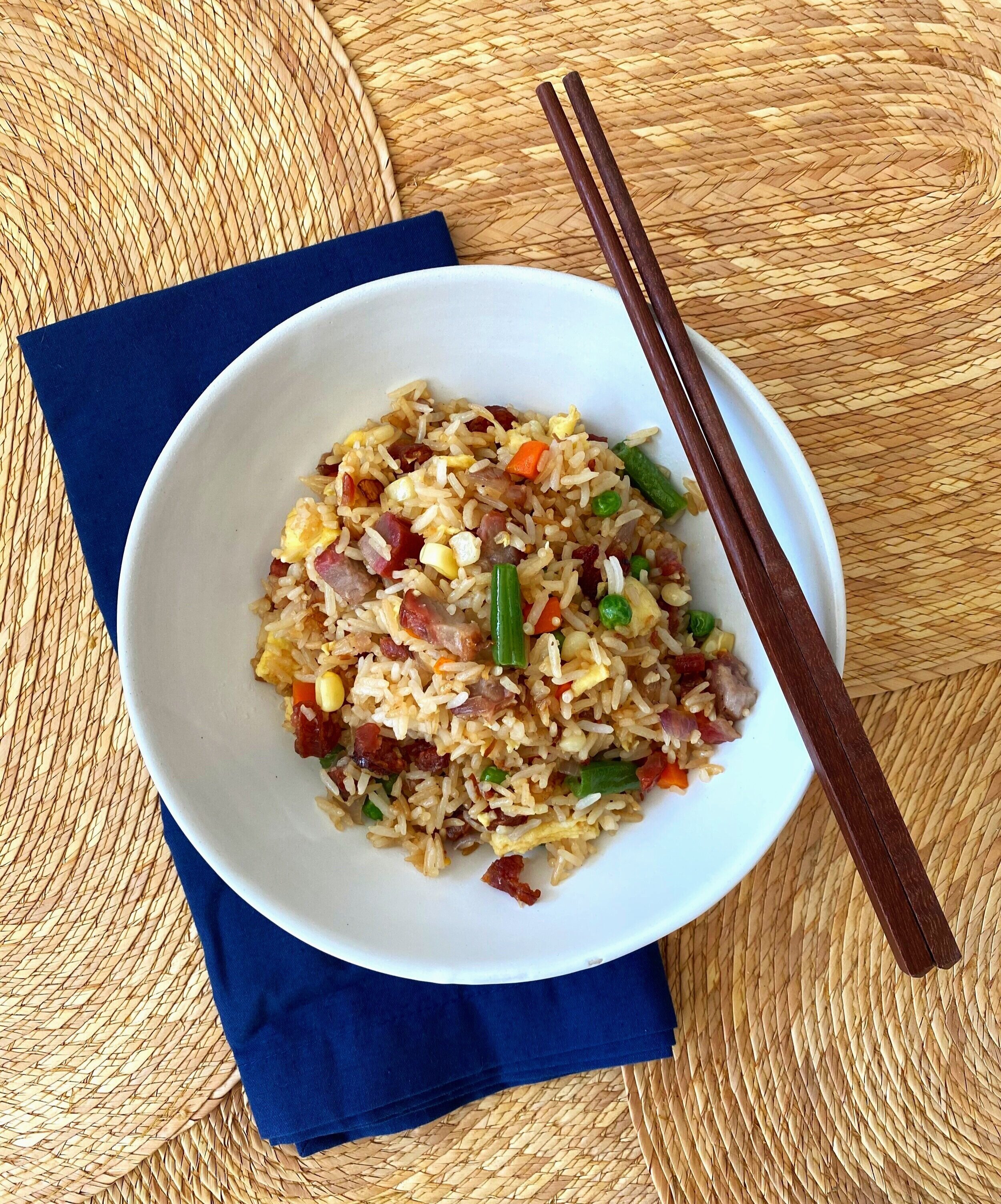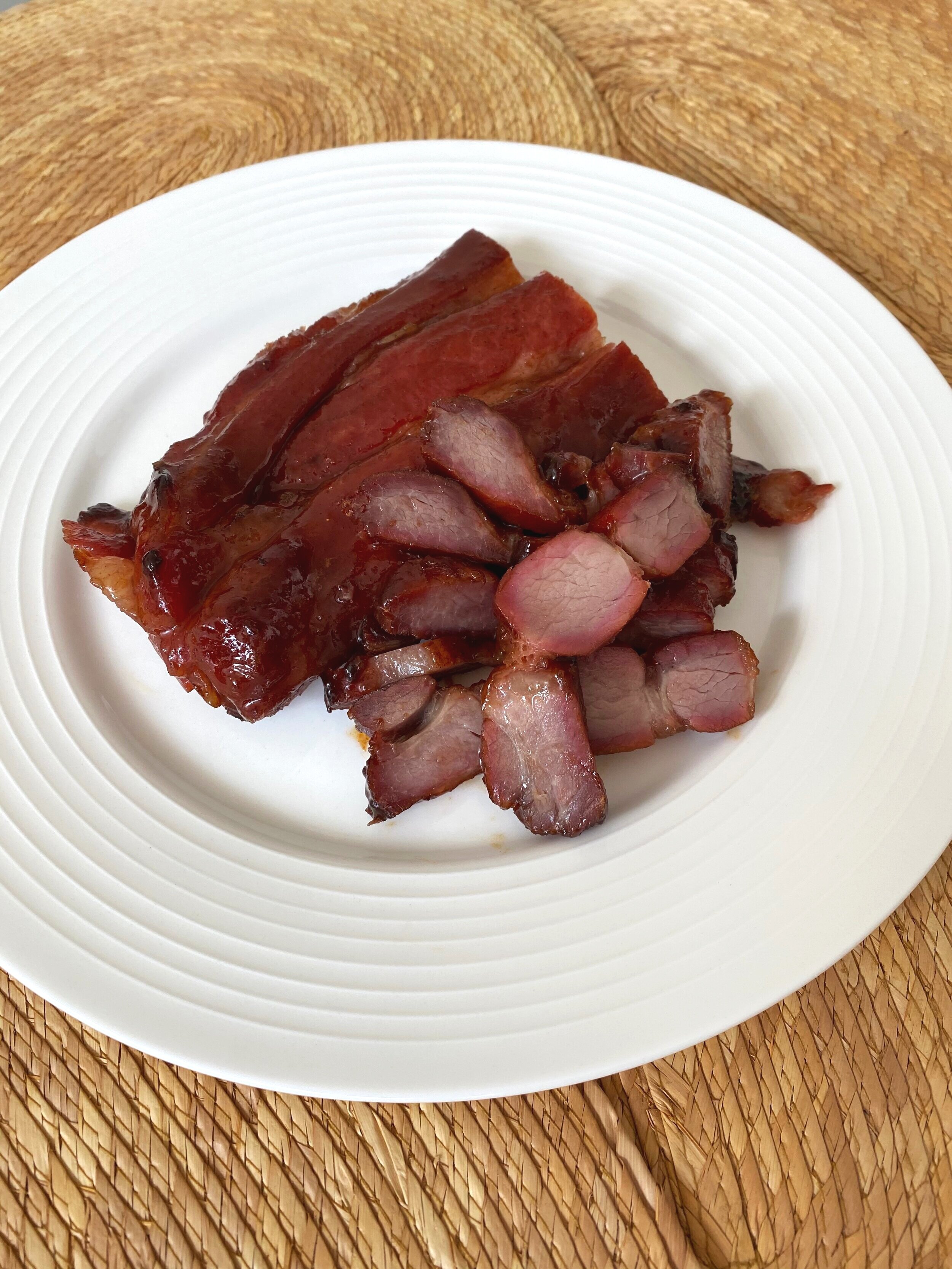better than takeout pork fried rice
In a weird way, Chinese takeout is a form of comfort food to me even though growing up my parents never made this for dinner. Chinese takeout was created out of necessity. Indentured servants and early immigrants craved for a taste of home and they didn’t have the funds to recreate the exact meals. So they did create some kind of stir-fry. However, the Chinese takeout staples (General Tso Chicken, Pork Fried Rice, Egg Rolls, etc.) were created for the American diner. Everything is much sweeter with a thick gravy like substance than traditional cuisine. Yet growing up as an ABC (American Born Chinese), I have learned to love it and it does provide comfort especially through hard times. It is affordable and filling. This version is my take on it, combining traditional flavors and a very basic formula. I hope you give this a try the next time you’re going to call for takeout. I promise it’s better.
PS: General Tso Chicken was not named after a real general.
better than takeout pork fried rice
Prep time: 20 minutes | Total time: 20 minutes
Serves: 4
Ingredients:
2 tablespoons vegetable oil
2 large eggs, beaten
2 links Chinese sausage*, diced, about 3/4 cup
2 cloves garlic, finely chopped
1 small red onion, diced
1 cup frozen vegetable mix, such as peas, carrots and string beans
4 cups chilled steamed white rice
1 tablespoon soy sauce
1 teaspoon fish sauce
1/2 teaspoon ground white pepper
1/4-pound Cantonese style barbecue pork aka Char Siu**, diced, about 1 1/4 cups
1 tablespoon toasted sesame oil
Special equipment:
Dutch oven
Large metal spoon
Wooden spoon
Instructions:
Heat the vegetable oil in a large non-stick skillet or Dutch oven over medium-high heat. Swirl to coat the pan. Pour in the eggs, swirl the pan so the egg forms a large thin pancake. (Lift the edge of the egg to allow any uncooked egg to run to the center.) As soon as the egg has set, turn it out of the pan onto a cutting board. Cool slightly and rough chop. Transfer to a bowl and set aside.
Lower the heat to low and add Chinese sausage. Cook until most of the fat has rendered out and pieces have a golden edge, about 2 minutes. Stirring constantly with a large metal spoon. or wooden spoon. Add the garlic and onion into the pan. Increase heat to medium and cook the onions until they are translucent, and garlic is golden brown, about 3 minutes more. Turn heat to high and add the frozen vegetables, cook until vegetables are thawed out and excess water is cooked out, about 2 minutes. Add rice and break apart large chunks. Add the soy sauce, fish sauce and white pepper. Stir to combine.
Fold in the diced barbecue pork and egg, stirring until heated through, about 2 minutes. Drizzle the sesame oil and stir gently until everything is well combined. Season to taste and feel free to add additional soy sauce, if preferred. Serve immediately.
Cook’s Note
Chinese Sausage* (Pictured above.)
Chinese sausage are also known as lap cheong, 臘腸. It is traditionally made with ground pork, lard, spices and grain alcohol. The sausage is marinated, salted, smoked and cured. There is a choice of fatty or lean sausages. There are different kinds ranging from those made using fresh pork to those made using pig livers, duck livers and even turkey livers. Usually a sausage made with liver will be darker in color than one made without liver. The most common way to enjoy Lap Cheong is to steam it or stir fry. They are usually located in butcher section of Asian supermarkets and also on Amazon.
Cantonese style Barbecue Pork aka Char Siu** (Pictured above.)
Char siu, 叉燒, is a popular way to flavor and prepare barbecued pork in Cantonese cuisine. It is classified as a type of siu mei, Cantonese roasted meat. Char siu literally means "fork roasted" (char means fork and siu means fire), the traditional cooking method for the dish: long strips of seasoned boneless pork are skewered with long forks and placed in a covered oven or over a fire. The glaze is a mixture honey, soy sauce, spices and red fermented bean curd, 南乳. However, the bright red color is from food coloring. The difference between traditional char siu and take out pork in pork fried rice is take out pork is often boiled, quickly roasted and dyed red. It does not have the traditional charred flavor and sweetness from the glaze.


